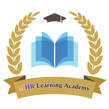|
Note : this paper contains fifty (%) objective type questions of two (2) marks each. All questions are compulsory. 1. Which is the nodal body for adoption of children in india ? (A) NIPCCD (B) CARA (C) CSWB (D) NCPCR 2.The purging of repressed emotions to get relief is called (A) Sublimation (B) Ambivalence (C) Catharsis (D) Fixation 3.The roadmap that guides the behaviour of the members of a society is
(A) Groups (B) Culture (C) Peers (D) Religion 4.Language of proximity is also known as (A) Verbal Communication (B) Non-verbal Communication (C) Oral Communication (D) Written Communication 5.Which is not included in community sentiment ? (A) Sense of dependence (B) We-feeling (C) Instability (D) Role feeling 6.The funding agency formed for fund-raising and distributing the funds is called (A) Community Welfare Council (B) Community Chest (C) Neighbourhood Council (D) Community Centre 7.‘Social Distance Scale’, was developed by (A) Likert (B) Thorndike (C) Bogardus (D) None of the abouve 8.The process of transforming social policy into social service is …………… (A) Social Welfare Administration (B) Social Aid (C) Social Media (D) Social Justice 9.The theory that is based on rewards and punishment is (A) Trial and Error theory of learning (B) Operant conditioning (C) Social Learning theory (D) Classical conditioning 10.Who is known as the father of ‘intelligence test’ ? (A) Bennett (B) Gesell (C) Villand (D) Wechsler 11.The theory which believes in exemplary punishment to discourage the offender from repeating his crime and sets an example for others to keep away from crime is called (A) Deterrent theory (B) Preventive theory (C) Reformative theory (D) Retributive theory 12.Which of the following constitutional provisions prohibits employment of children below the age of 14 years in factories, mines or any other hazardous occupation …………… (A) Article 14 (B) Article 21 (C) Article 24 (D) Article 45 13.The Human Rights Council meets at (A) New York (B) Vienna (C) Geneva (D) Paris 14.The method that brings about adjustment in personal and social relationships is called (A) Social casework (B) Social adjustment (C) Social group work (D) Defence mechanism 15.According to whom groups must solve two general problems – i.e. instrumental and socio-emotional, to maintain themselves (A) Grace Coyle (B) Charles Levy (C) Clara A. Kaiser (D) Robert Bales 16.Probation is (A) an escape from imprisonment (B) a conditional suspension of sentence (C) an institutional method of correction (D) a life of freedom from any kind of control 17.The three stages of social change – i.e. theological, metaphysical and positive are postulated by (A) Nikolai Mikhailovesky (B) Sorokin (C) Auguste Comte (D) Herbert Spencer 18.Which among the following is not a primary source of data collection ? (A) Observation (B) Questionnaire (C) Interview (D) Referral 19.‘Situation approach’ of leadership is also called as (A) trait theory (B) contingency theory (C) ethical approach (D) functional approach 20.Every element has a known non-zero probability of being sampled and involves random selection at some point (A) Probability sampling (B) Non-probability sampling (C) Both (A) and (B) are correct (D) None of the above 21.Confrontation focuses on one of the following : (A) Similarity in the statements (B) Congruence in the statements (C) Discrepancies in the statements (D) None of the above 22.Cognitive needs of human beings are (A) the need to develop abilities (B) the need for symmetry order and beauty (C) the need for security and freedom (D) the need to know, to understand and explore 23.The difference between Bhoodan and Gramdan is (A) Bhoodan involves donation from individuals whereas Gramdan involves community action (B) In Bhoodhan individual ownership is retained whereas in Gramdan it is abolished (C) In Bhoodan individuals are beneficiaries whereas in Gramdan the beneficiary is whole village community (D) All the above 24.The ‘client-centered approch’ is developed by (A) Kurt Lewin (B) Bandura (C) Homans (D) Carl Rogers 25.The approach to make people ‘whole’, by encouraging them to shed their defences and unlock their potentials is known as (A) Psychodynamic approach (B) Systems approach (C) Person-centred approach (D) Gestalt approach 26.The ‘Task-Centered social work’, has been developed by (A) Reid and Eistein (B) Conard (C) Glenn (D) Waldo 27.Which of the following is not a feature of standard Deviation (A) It is the best measure of variation (B) It is not much affected by fluctuations of sampling (C) It gives more weightage to extreme values and less to those which are nearer the mean (D) It is the measure for calculating combined standard deviation of two or more groups 28.The disorder which limits food intake is (A) Bipolar disorder (B) Bulimia nervosa (C) Binge eating disorder (D) Annorexia nervosa 29.The number of elements to be included in the study is (A) Variable (B) Hypothesis (C) Sample size (D) Universe 30.The scale in which numbers are used to rate the objects which have numerically equal distance are termed as (A) Nominal scale (B) Ordinal scale (C) Interval scale (D) Ratio scale 31.Evaluation of clients’ present problem the way he is experiencing is ……….. (A) Etiological diagnosis (B) Clinical diagnosis (C) Dynamic diagnosis (D) Social diagnosis 32.Which is not the nature of community ? (A) Geographical area (B) Common ties (C) Social interaction (D) Individualism 33.Arrange the following steps in relation to self-help groups in correct sequence: 1. Lending, repayment and maintaining accounts and records 2. Arranging regular meetings with the group 3. Identifying the area and forming a group of women with common interests 4. Training and capacity building for sustenance and empowerment 5. Deciding on the amount for contribution and pooling the money. Codes : (A) 4 3 2 5 1 (B) 5 4 3 2 1 (C) 3 2 5 1 4 (D) 2 3 4 1 5 34.To study the consequences of psychoactive drug use the two variables are (A) Social situation and family role (B) Demand reduction and supply reduction of drugs (C) Characteristics of the drug and characteristics of the user (D) Marketing of drugs and role of drug mafias 35.Which of the following is not true in relation to significance of NGOs role in mental health? (A) Gross scarcity of psychiatrists and other trained personnel. (B) Availability of sufficient government funds for NGOs (C) Scarcity of cost-effective strategies and interventions (D) lack of public awareness and social stigma attached 36.Arrange the sequence of authorities in setting industrial disputes under Industrial Disputes Act. 1. Board of Conciliation 2. Works Committee 3. Conciliation Officer 4. Court of enquiry Codes : (A) 1 3 2 4 (B) 2 3 1 4 (C) 2 4 3 1 (D) 3 1 2 4 37.Which is the correct sequence in social case work process ? (A) Intake, investigation, diagnosis, treatment (B) Intake , diagnosis, investigation, treatment (C) Intake, diagnosis, treatment, investigation (D) Intake, investigation, treatment, diagnosis 38.The sequential phases in a social action method are I. Sensitization II. Awareness Building III. Mobilization IV. Mass Action Codes : (A) I, II, III, IV (B) II, I, III, IV (C) III, I, II, IV (D) I, II, IV, III 39.Assertion (A) : Psychosomatic problems are addressed by the case workers Reason (R) : Psychological aspects can have influence on the physical conditions of an individual. Codes : (A) Both (A) and (R) are correct and (R) is the correct explanation of (A). (B) Both (A) and (R) are not correct. (C) Both (A) and (R) are correct, but (R) is not the correct explanation of (A) (D) (A) is correct, but (R) is not the correct explanation of (A) 40.Assertion (A) : A scientific hypothesis is a proposed explanation of a phenomenon which still has to be rigorously tested. Reason (R) : A working hypothesis is a provisionally accepted hypothesis proposed for validation. Codes : (A) (A) is correct and (R) is wrong (B) Both (A) and (R) are correct and (R) is the correct explanation of (A) (C) Both (A) and (R) are wrong (D) Both (A) and (R) are correct, but (R) is not an explanation of (A) 41.Assertion (A) : Tribal people live in a scattered habitation Reason (R) : Tribal society is relatively isolated when compared to other societies. In the context of above two statements which one of the following is correct ? Codes : (A) Both (A) and (R) are correct (B) Both (A) and (R) are not correct (C) (A) is correct, but (R) is not correct. (D) (A) is not correct, but (R) is correct 42.Assertion (A): Recording in social group work is significant for achieving the objectives of the group. Reason (R) : Records enable the worker to work out programmes and plan of action for future. Codes : (A) (A) is correct and (R) is not correct (B) (A) is not correct and (R) is correct (C) Both (A) and (R) are correct and (R) is the correct explanation of (A) (D) (A) and (R) are correct, but (R) is not the correct explanation of (A). 43.Match the following items given in List – I with the items given in List – II : List – I List – II a. Provision for just and humane conditions of work and maternity relief 1. Article 40 b. Right to work, education and public assistance in certain cases 2. Article 41 c. Living wages etc for workers 3. Article 42 d. Organization of Village Panchayats 4. Article 43 Codes : a b c d (A) 1 3 2 4 (B) 3 1 4 2 (C) 3 2 4 1 (D) 1 3 4 2 44.Match the following and select the answer from the codes given below : List – I List – II a. The Minimum Wages Act 1. 1926 b. The Maternity Benefit Act 2. 1951 c. The Plantation Act 3. 1948 d. The Trade Unions Act 4. 1961 Codes : a b c d (A) 2 4 1 3 (B) 3 4 2 1 (C) 1 3 4 2 (D) 4 3 2 1 45.Which among the following is wrongly matched ? 1. AITUC - CPM 2. INTUC - Congress 3. BMS - BJP 4. CITU - CPI Codes : (A) 1, 2 and 3 (B) 2, 3 and 4 (C) 1 and 4 only (D) 2 and 3 only Read the passage given below and answer the following questions as per the understanding of the passage (Question Nos. 46 to 50) : The historical nature of gender-based violence confirms that it is not an unfortunate aberration but systematically entrenched in culture and society, reinforced and powered by patriarchy. Violence against women maintains the structures of gender oppression; be it carried out by individuals in private and/or by institutional forces in the public sphere. Families, communities, and social, legal and civic institutions may covertly and overtly endorse it. Whilst violence commands greater attention and fear; sexism and misogyny do their share to shape inequality, by defining and upholding restrictive gender norms. Patriarchy is about the social relations of power between men and women, women and women, and men and men. It is a system for maintaining class gender, racial and heterosexual privilege and the status of power- relying both on crude forms of oppression, like violence; and subtle ones, like laws; to perpetuate inequality. Patriarchal beliefs of male, heterosexual dominance lie at the root of gender-based violence. Patriarchy is a structural force that influences power relations, whether they are abusive or not. Power sets the agenda for patriarchy. But, conflating it with abuse or masculinity is problematic and we need a more complex analysis of the typical power and control explanations. Feminism, which is about women claiming their rights to self-determination and equality, confronts gender conformity and aims to replace relationships of power with relationships of meaning. Culture is used to justify gender inequality and violence by evoking traditional cultural beliefs about how women should be treated. The defence of the culture of a place, country, religion, identity; and the culture of patriarchy is not static : its manifestation on an army base differs from that in a rural town; just as the culture of patriarchy in U.S. differs from that of Gulf, or India. 46.The historical nature of gender-based violence confirms it as I. An unfortunate aberration II. Systematically entrenched culture of patriarchy III. Reinforced inequalities IV. All of the above Codes : (A) I and II are correct (B) II and III are correct (C) I and III are correct (D) IV is correct 47.Patriarchy is about social relations of power between I. Men and women II. Women and women III. Men and men IV. All the above Codes : (A) I and II are correct (B) II and III are correct (C) III and I are correct (D) IV is correct 48.Complex analysis of the typical power and control helps us to understand (A) Patriarchy (B) Feminism (C) Both (D) None 49.………………. is used to justify gender inequality and violence. (A) Sexism (B) Culture (C) Religion (D) Region 50. Feminism refers to (A) Superior status of women (B) Replacing relationships of power with relationships of meaning (C) Status quo of power (D) Fighting against patriarchy
0 Comments
Your comment will be posted after it is approved.
Leave a Reply. |
UGC NET Training for
Social Work We are pleased to announce the training programme on “UGC NET Social Work”. The details of which are as under. It covers in detail the UGC NET Social Work syllabus and previous question papers.
Categories
All
|
SITE MAP
SiteTRAININGJOB |
HR SERVICESOTHER SERVICESnIRATHANKA CITIZENS CONNECT |
NIRATHANKAPOSHOUR OTHER WEBSITESSubscribe |
MHR LEARNING ACADEMY
50,000 HR AND SOCIAL WORK PROFESSIONALS ARE CONNECTED THROUGH OUR NIRATHANKA HR GROUPS.
YOU CAN ALSO JOIN AND PARTICIPATE IN OUR GROUP DISCUSSIONS.
YOU CAN ALSO JOIN AND PARTICIPATE IN OUR GROUP DISCUSSIONS.
|
|


 RSS Feed
RSS Feed





